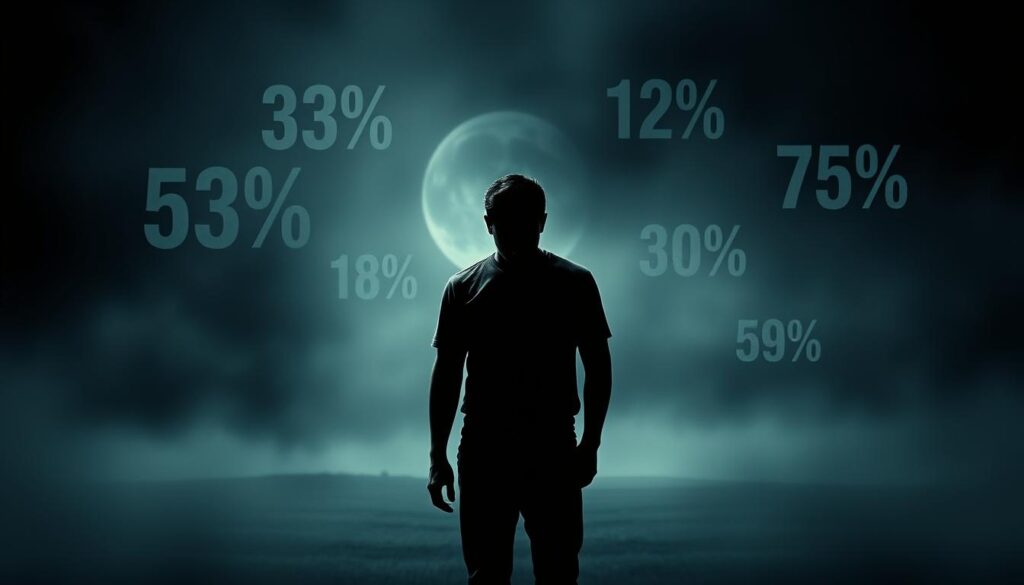June is recognized as Men’s Mental Health Month, a crucial period dedicated to raising awareness about the mental health challenges men face. The stigma surrounding men’s mental health makes it difficult for them to seek help, with some viewing mental health conditions as a sign of weakness. In the United States, organizations like Mental Health America and others work tirelessly to break down these barriers.
This awareness month originated in 1994 and has since evolved to address growing concerns around men’s mental health issues. It’s essential to continue the conversation about men’s mental health throughout the year, not just during the designated month.
Key Takeaways
- Men’s Mental Health Month is recognized in June to raise awareness about men’s mental health challenges.
- The stigma surrounding men’s mental health prevents many from seeking help.
- Organizations are working to break down barriers to men’s mental health care.
- The conversation about men’s mental health needs to continue beyond June.
- Men’s mental health issues have significant impacts on individuals and communities.
Understanding Men’s Mental Health Month
As we observe Men’s Mental Health Month, it’s crucial to understand the underlying factors contributing to men’s mental health issues. Men’s mental health is a critical concern, with significant implications for individuals, families, and society as a whole.
When and Why It’s Observed
Men’s Mental Health Month is observed annually in June. It was established to raise awareness about the mental health issues affecting men and to encourage men to seek help when needed. In the United States, men live an average of six years less than women, and they die at younger ages regardless of age. More men die of cancer, diabetes, suicide, motor vehicle accidents, and COVID-19 than women.
The Importance of Dedicated Awareness
Dedicated awareness efforts are crucial in addressing men’s mental health issues. Societal expectations often portray men as being able to handle problems themselves, which can prevent them from seeking help. By normalizing conversations about men’s mental health, we can create safer spaces for men to express vulnerability.
| Issue | Impact on Men | Awareness Effort |
|---|---|---|
| Mental Health Stigma | Prevents men from seeking help | Normalize conversations about men’s mental health |
| Societal Expectations | Portrays men as being strong and self-sufficient | Educate about the importance of seeking help |
| Lack of Awareness | Men’s mental health issues go unrecognized or untreated | Raise awareness about men’s mental health issues |
By understanding the importance of dedicated awareness and the issues affecting men’s mental health, we can work towards creating a supportive environment that encourages men to seek help when needed.
The Crisis in Men’s Mental Health

A critical examination of men’s mental health reveals a complex web of issues that need to be addressed. The mental health of men is a critical concern, with various factors contributing to the crisis.
Alarming Statistics and Trends
Recent statistics highlight the severity of the issue. For instance, LGBTQ+ men are more likely to experience mental health conditions compared to their straight and cis counterparts. Moreover, adults with disabilities are almost five times as likely to report frequent mental health distress.
Barriers to Seeking Help
Despite the need for support, many men face significant barriers to accessing mental health care. BIPOC men, for example, have less access to appropriate care and services, often relying on community support instead of professional help.
Intersectionality and Mental Health
The intersection of various identities and factors with gender creates unique mental health challenges. For example, men with disabilities experience mental health distress at nearly five times the rate of men without disabilities. An intersectional approach can help create more effective and accessible services for all men.
| Group | Mental Health Challenges | Barriers to Care |
|---|---|---|
| LGBTQ+ Men | Higher rates of mental health conditions | Limited access to tailored services |
| BIPOC Men | Equal rates of mental health conditions as white men | Less access to appropriate mental health care |
| Men with Disabilities | Higher rates of mental health distress | Complex care needs |
Supporting Men’s Mental Health Month

Men’s Mental Health Month serves as a reminder that supporting men’s mental well-being is a year-round commitment. It’s essential to recognize the importance of creating a supportive environment that fosters open conversations and encourages men to seek help when needed.
Organizations and Resources
Several organizations provide valuable resources and support for men’s mental health. These include mental health hotlines, online therapy platforms, and community-based initiatives. By partnering with these organizations, we can amplify our efforts to raise awareness and provide support.
| Organization | Resource | Description |
|---|---|---|
| Mental Health America | Online Screening Tools | Confidential mental health screening tools |
| National Alliance on Mental Illness | Support Groups | Face-to-face support groups for individuals and families |
| American Foundation for Suicide Prevention | Suicide Prevention Resources | Resources and training for suicide prevention |
How to Participate and Raise Awareness
Individuals can participate in Men’s Mental Health Month by sharing information on social media, organizing community events, and engaging in conversations with the men in their lives. By using hashtags related to men’s mental health, we can create a ripple effect that raises awareness and encourages others to get involved.
Supporting the Men in Your Life
Supporting the men in your life involves being an active listener, encouraging open conversations, and helping them access professional resources when needed. By doing so, we can create a supportive environment that promotes men’s mental well-being throughout the year.
Breaking the Stigma: Moving Forward
The journey to destigmatize men’s mental health is ongoing, and it’s essential to keep the momentum going beyond awareness month. While it’s become more acceptable for men to express their emotions and seek help, the stigma surrounding men’s mental health still persists.
Promising approaches and initiatives have successfully engaged men in mental health care and support. Changing definitions of masculinity are creating more space for men to acknowledge and address mental health concerns. Male role models, celebrities, and public figures are also playing a crucial role in normalizing conversations around men’s mental health.
Addressing men’s mental health benefits not just the individuals but also their families, communities, and society as a whole. As we move forward, it’s essential to continue supporting men’s mental health beyond the awareness month, emphasizing that mental health is a year-round concern requiring ongoing attention and care.
Seeking help for mental health challenges is a sign of strength, not weakness. By continuing to break the stigma around men’s mental health, we can lead to better outcomes for men in all areas of life. Let’s continue to support the men in our lives and encourage them to prioritize their mental health.
FAQ
What is the significance of dedicating a month to men’s mental well-being?
The dedication of a month to men’s mental well-being, observed in June in the United States, aims to raise awareness about the mental health issues men face, such as depression, anxiety, and suicide, and to encourage men to seek help without fear of stigma.
Why do men struggle more with seeking help for their mental well-being?
Men often struggle with seeking help due to societal expectations and traditional masculine norms that discourage them from expressing emotions or showing vulnerability, leading to a higher risk of untreated depression and other mental health problems.
How can family and friends support men struggling with their mental well-being?
Family and friends can play a crucial role by being supportive and understanding, encouraging open conversations about anxiety and other health issues, and helping men access professional treatment and services.
What are some common barriers to men accessing mental well-being services?
Common barriers include stigma around mental health, lack of awareness about available services, and societal pressures that discourage men from seeking help, making it harder for them to access the care they need.
How can one participate in Men’s Mental Health Month and raise awareness?
Participation can involve sharing information on social media, organizing or attending local events, and engaging in conversations about men’s mental health to help break the stigma and encourage men to seek support.

